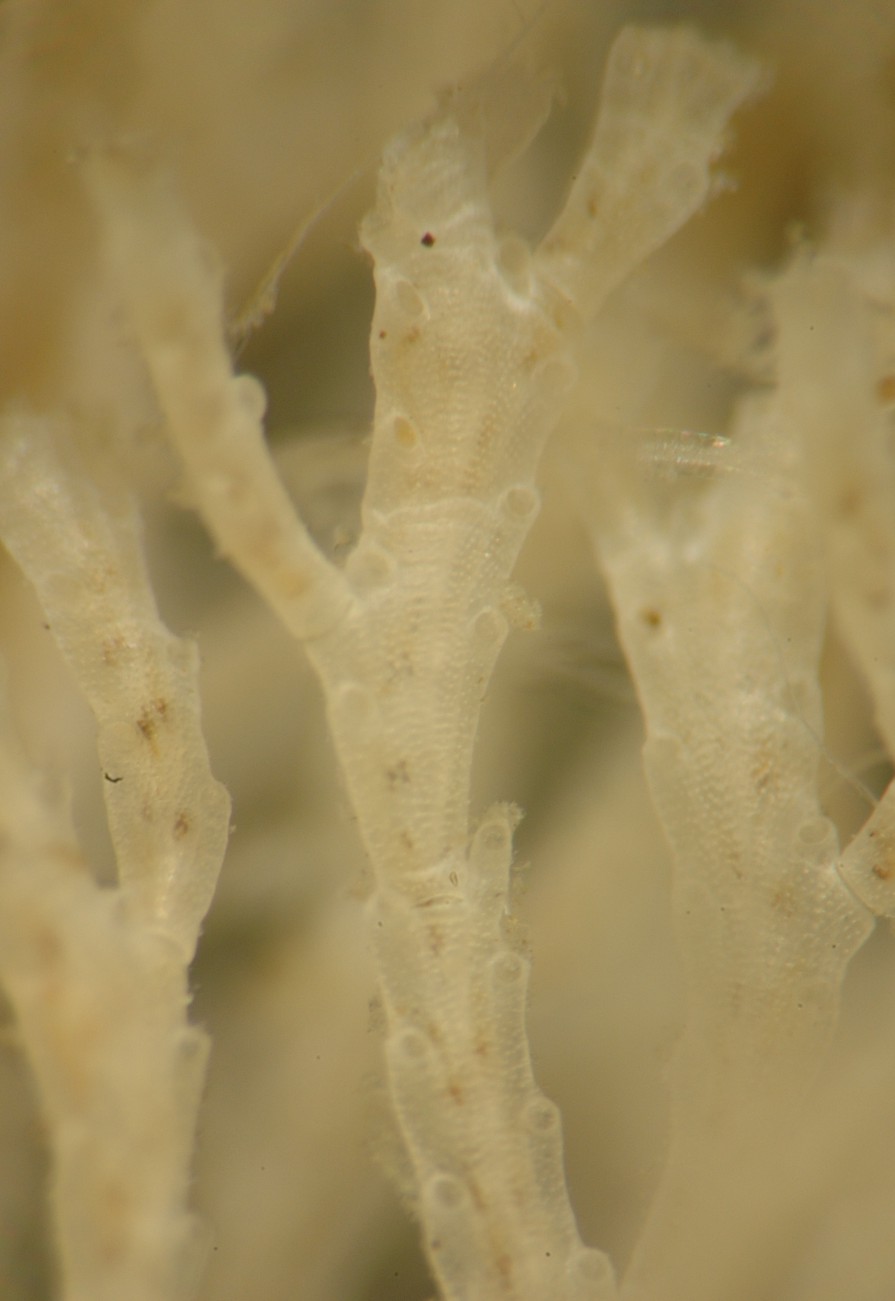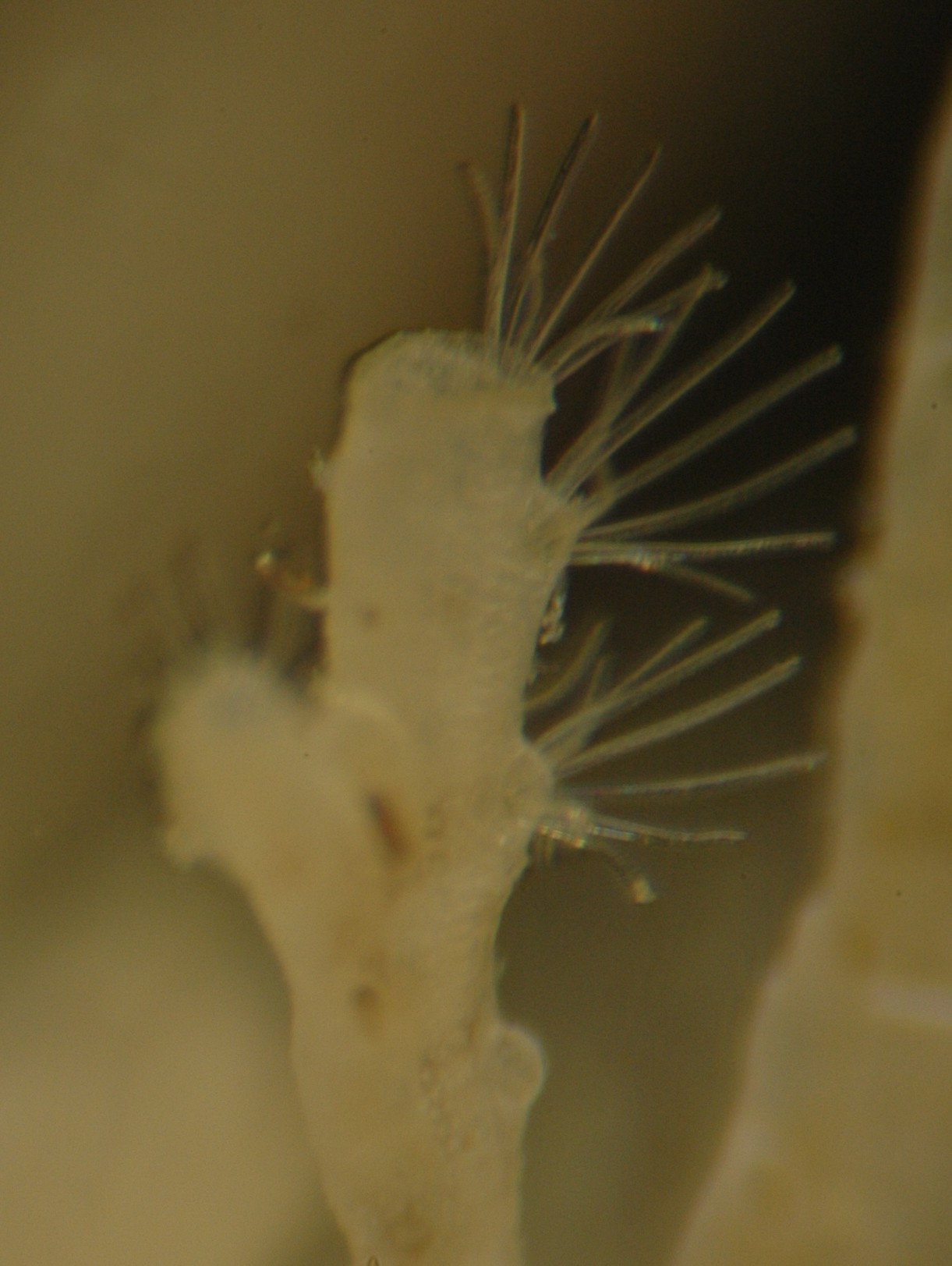Crisia occidentalis Trask, 1857Common name(s): |
|
| Synonyms: |  |
| Phylum
Bryozoa
Class Stenolaemata Order Cyclostomata Suborder Articulata Family Crisiidae |
|
| Crisia occidentalis, about 3 cm tall. | |
| (Photo by: Dave Cowles, August 2006) | |
How to Distinguish from Similar Species: Of the bryozoans with erect branching colony and a biserial row of zooecia, Crisia pugeti and Crisia serrulata have an ooeciostome that is curved or bent forward. Crisia maxima has straight ooeciostomes the branches, rather than bending toward one another or ending with spikelike projections at their tips, are straight with long internodes. This species closely resembles Crisia eburnea from the Atlantic.
Geographical Range: Abundant in San Francisco Bay. Found at least from Los Angeles to Puget Sound. Reported from Jamaica (but see note above on C. eburnea)
Depth Range:
Habitat: Attached
Biology/Natural History: Cyclostome bryozoans are mostly marine, have tubular, calcareous zooecia, and the aperture is usually circular. They have no operculum. Embryos develop in ovicells which are seen as swellings on the colony. The current created by the cilia in this species is surprisingly strong. I watched particles from a distance of 4-5x the length of the lophophore tentacles become entrained in the current, drawn toward the tentacles, and blown away again, all within about 1/2 second. This species does not have a long planktonic stage.
| Return to: | |||
| Main Page | Alphabetic Index | Systematic Index | Glossary |
References:
Dichotomous Keys:Kozloff 1987, 1996
Smith and Carlton, 1975
General References:
Johnson
and Snook, 1955
Scientific Articles:
Parker, T. and V. Tunnicliffe, 1994. Dispersal Strategies of
the Biota on an Oceanic Seamount: Implications for Ecology and
Biogeography
Biological Bulletin 187: 3 336-345. (Found Crisia occidentalis
on
Cobb Seamount, 510 km offshore of the Oregon coast. The
species does
not have a long pelagic stage.
Wollacott, Robet M. and Wheeler J. North, 1971. Bryozoans of California and northern Mexico kelp beds. pp. 455-479 in North, Wheeler J. (ed.), The Biology of Giant Kelp Beds (Macrocystis) in California. Beihefts zur Nova Hedwigia Heft 32. Publisher: J. Cramer, Lehre, Germany.
Web sites:
General Notes and Observations: Locations, abundances, unusual behaviors:

In this view one can see the double (biserial) row of zooecia along
the branches, the round apertures without opercula, and the slight
curving
of the tips of the branches inward.
An Ooeciostome, or opening for the reproductive ovicell, can be seen
in the center of the central branch near the lower third of the
picture.
Note that it is a straight, slitlike opening.
Several joints can also be seen in the branches, which gives the colony
more flexibility.

This closeup of a branch tip shows several zooids with extended
lophophores.
Cilia (visible as fuzzy edges to the lophophore tentacles) beat rapidly
on the lophophores, creating a strong water current which flows into
the
center of the lophophore cup and out between the tentacles.
Authors and Editors of Page:
Dave Cowles (2006): Created original page